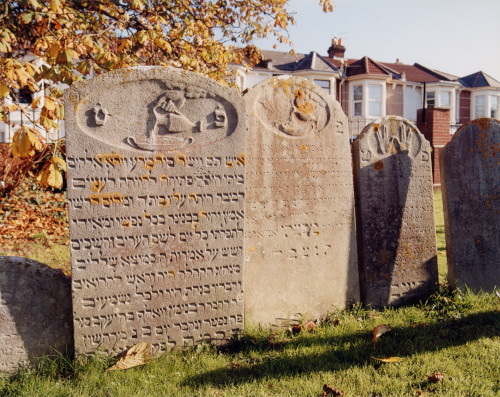
(the oldest in the country outside London)


For general background, see the following literature:
In Print
Articles by Sharman Kadish:
' "Bet Hayim": An Introduction to Jewish Funerary Art and Architecture in Britain' Transactions of the Ancient Monuments Society Vol. 49 (2005) pp. 31-58
'Jewish Funerary Architecture in Britain and Ireland since 1656' Jewish Historical Studies Vol. 43 (2011) pp. 59-88
Online
On the Historic England website:
'Jewish Burial Grounds: Understanding Values' (Barker Langham Consultants, 2016)
'Anglo-Jewish Burial Grounds: The Post-Resettlement Period' (Historic England, 2019)
Both of these documents were informed by the Survey of the Jewish Built Heritage
Access
Jewish burial grounds may often be locked up or difficult to reach. Sadly, vandalism, whether racist or simply malicious in intent, is a fact of life (and of Jewish life in particular, even in Britain). Making Jewish sites better known and attracting more visitors to them may be the best antidote. Neglected sites, about which nobody apparently cares, are the most vulnerable to attack. On the other hand, many Jewish plots are located within the boundaries of municipal cemeteries and are therefore open (or at least the key is available) during general cemetery hours.
The second edition of the authoritative national guidebook Jewish Heritage in Britain and Ireland: An Architectural Guide by Sharman Kadish (Historic England 2015) provides reliable access telephone numbers, wherever possible, for Jewish burial grounds that date from before 1939 in England, Wales, Scotland and Ireland, as well as contact details for some outlying communities. It also features 'Jewish Burial Grounds of the Resettlement' amongst several other heritage trails around the East End of London.
Inevitably, over time, some contact details change so, these days, it is worth checking details online too. Websites of the major synagogue organisations in London often provide access details on their 'Burial Society' page. If you are still in doubt, telephone ahead of your visit - do not rely on email, texting or social media!
More and more historical information is becoming available on the Jewish Genealogical Society of Great Britain [JGSGB] and JewishGen joint website and also on the Cemetery Scribes website.
Conduct at Jewish Cemeteries
Jewish cemeteries are sacred places in perpetuity and, as such, should be treated with appropriate respect in matters relating to behaviour and dress. Please be kind enough to dress modestly when visiting a Jewish cemetery. Less Orthodox congregations and those belonging to the Reform and Liberal movements may take a more relaxed attitude, but it is always best to err on the side of caution!
Men: Please wear a head covering inside the ohel [prayer hall] and within the cemetery grounds; long sleeves and no shorts.
Women: Married women should cover their heads; long sleeves and skirts below the knee. Please note: trousers and jeans are not considered suitable attire for visits to a Jewish burial ground.
It is forbidden to eat, drink or smoke inside a Jewish burial ground. Please do not bring food or drink inside a cemetery. Always go out for refreshments. However, you may by all means accept the hospitality of the sexton or other official for tea or coffee in the office.
Other points to note
If you wish to take photographs, ask for permission. Photography is forbidden on Shabbat [the Jewish Sabbath] and Jewish Holydays. Orthodox Jewish cemeteries close early on Fridays in winter and are closed on Shabbat and Jewish Holydays.
It is strictly forbidden to walk over or step on any grave.
It is traditional to place stones on graves to mark a visit. Flowers, wreaths and pot plants are not generally to be found, except perhaps in Reform or Liberal cemeteries.
It is the custom amongst Jews to wash their hands on leaving a cemetery. However, running water is not always available at older burial grounds.
Thank you for your co-operation.